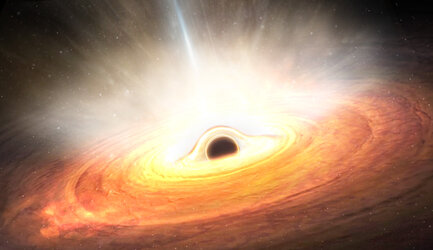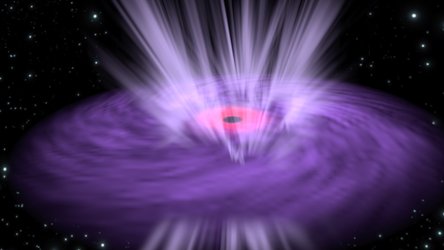Accept all cookies Accept only essential cookies See our Cookie Notice

About ESA
The European Space Agency (ESA) is Europe’s gateway to space. Its mission is to shape the development of Europe’s space capability and ensure that investment in space continues to deliver benefits to the citizens of Europe and the world.
Highlights
ESA - United space in Europe
This is ESA ESA facts Member States & Cooperating States Funding Director General Top management For Member State Delegations European vision European Space Policy ESA & EU Space Councils Responsibility & Sustainability Annual Report Calendar of meetings Corporate newsEstablishments & sites
ESA Headquarters ESA ESTEC ESA ESOC ESA ESRIN ESA EAC ESA ESAC Europe's Spaceport ESA ESEC ESA ECSAT Brussels Office Washington OfficeWorking with ESA
Business with ESA ESA Commercialisation Gateway Law at ESA Careers Cyber resilience at ESA IT at ESA Newsroom Partnerships Merchandising Licence Education Open Space Innovation Platform Integrity and Reporting Administrative Tribunal Health and SafetyMore about ESA
History ESA Historical Archives Exhibitions Publications Art & Culture ESA Merchandise Kids Diversity ESA Brand CentreLatest
Space in Member States
Find out more about space activities in our 23 Member States, and understand how ESA works together with their national agencies, institutions and organisations.
Science & Exploration
Exploring our Solar System and unlocking the secrets of the Universe
Go to topicAstronauts
Missions
Juice Euclid Webb Solar Orbiter BepiColombo Gaia ExoMars Cheops Exoplanet missions More missionsActivities
International Space Station Orion service module Gateway Concordia Caves & Pangaea BenefitsLatest
Space Safety
Protecting life and infrastructure on Earth and in orbit
Go to topicAsteroids
Asteroids and Planetary Defence Asteroid danger explained Flyeye telescope: asteroid detection Hera mission: asteroid deflection Near-Earth Object Coordination CentreSpace junk
About space debris Space debris by the numbers Space Environment Report In space refuelling, refurbishing and removingSafety from space
Clean Space ecodesign Zero Debris Technologies Space for Earth Supporting Sustainable DevelopmentLatest
Applications
Using space to benefit citizens and meet future challenges on Earth
Go to topicObserving the Earth
Observing the Earth Future EO Copernicus Meteorology Space for our climate Satellite missionsCommercialisation
ESA Commercialisation Gateway Open Space Innovation Platform Business Incubation ESA Space SolutionsLatest
Enabling & Support
Making space accessible and developing the technologies for the future
Go to topicBuilding missions
Space Engineering and Technology Test centre Laboratories Concurrent Design Facility Preparing for the future Shaping the Future Discovery and Preparation Advanced Concepts TeamSpace transportation
Space Transportation Ariane Vega Space Rider Future space transportation Boost! Europe's Spaceport Launches from Europe's Spaceport from 2012Latest

Strong black hole winds reshape a galaxy
Thank you for liking
You have already liked this page, you can only like it once!
This artist impression shows ultra-fast winds blasting out from the centre of galaxy Markarian 817. These winds, moving at many millions of kilometres per hour, clear out interstellar gas from a vast region of space. Without this gas, the galaxy can’t form new stars and the black hole in the galactic centre has little left to eat.
The inset shows what is happening at galaxy’s heart. A supermassive black hole draws in gas from its surroundings, which forms a hot, brightly lit ‘accretion disc’ (orange). The cause of the winds (white) is magnetic fields within the disc, which fling particles out in all directions at incredibly high speeds. These winds effectively block out X-rays (blue) which are sent out by the extremely hot plasma surrounding the black hole, called the corona.
Researchers caught Markarian 817 blasting out ultra-fast winds using ESA’s X-ray telescope XMM-Newton. Lasting for around a year, the winds will have significantly affected star formation in the galaxy. The fact that the black hole at the centre of the galaxy was showing rather average activity levels before producing the winds suggests that ultra-fast black hole winds are much more common than previously thought. In other words, black holes and their host galaxies strongly affect each other’s evolution.
Separate images: large view of the galaxy and close-up of the centre
[Image description: Side view of a galaxy with spiral arms of bright blue stars separated by dark bands of interstellar dust. The galaxy’s active centre is blasting out a strong wind of gas in all directions, shown as yellowish-white streaks. An inset zooms in on the centre, showing that the wind is coming from a swirling disc of gas, lit up in orange and yellow, which encircles a supermassive black hole.]
-
CREDIT
ESA (acknowledgement: work performed by ATG under contract to ESA) -
LICENCE
CC BY-SA 3.0 IGO or ESA Standard Licence
(content can be used under either licence)

Strong black hole winds reshape a galaxy

Black hole winds from a galactic core

Black hole with ultrafast winds

The peculiar wind of a spiral galaxy















 Germany
Germany
 Austria
Austria
 Belgium
Belgium
 Denmark
Denmark
 Spain
Spain
 Estonia
Estonia
 Finland
Finland
 France
France
 Greece
Greece
 Hungary
Hungary
 Ireland
Ireland
 Italy
Italy
 Luxembourg
Luxembourg
 Norway
Norway
 The Netherlands
The Netherlands
 Poland
Poland
 Portugal
Portugal
 Czechia
Czechia
 Romania
Romania
 United Kingdom
United Kingdom
 Slovenia
Slovenia
 Sweden
Sweden
 Switzerland
Switzerland






















